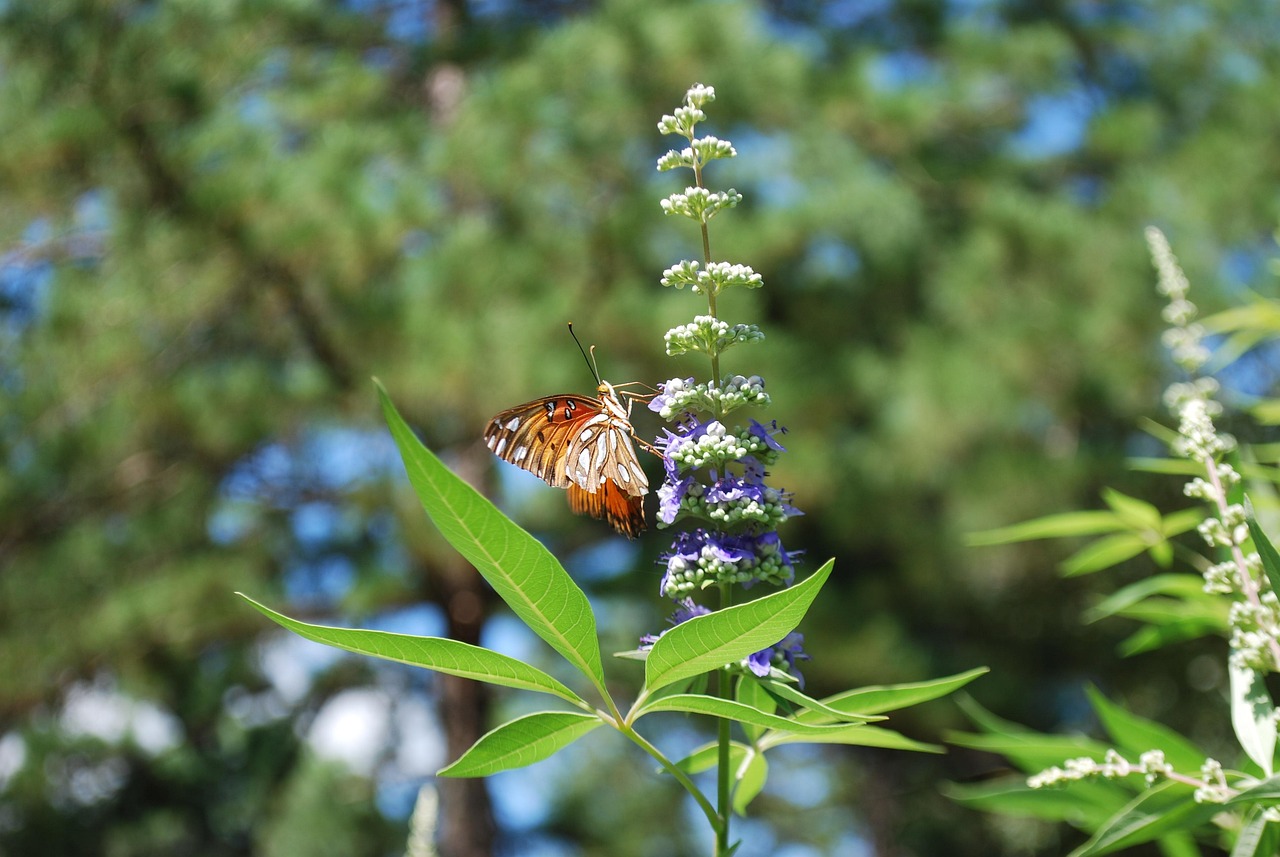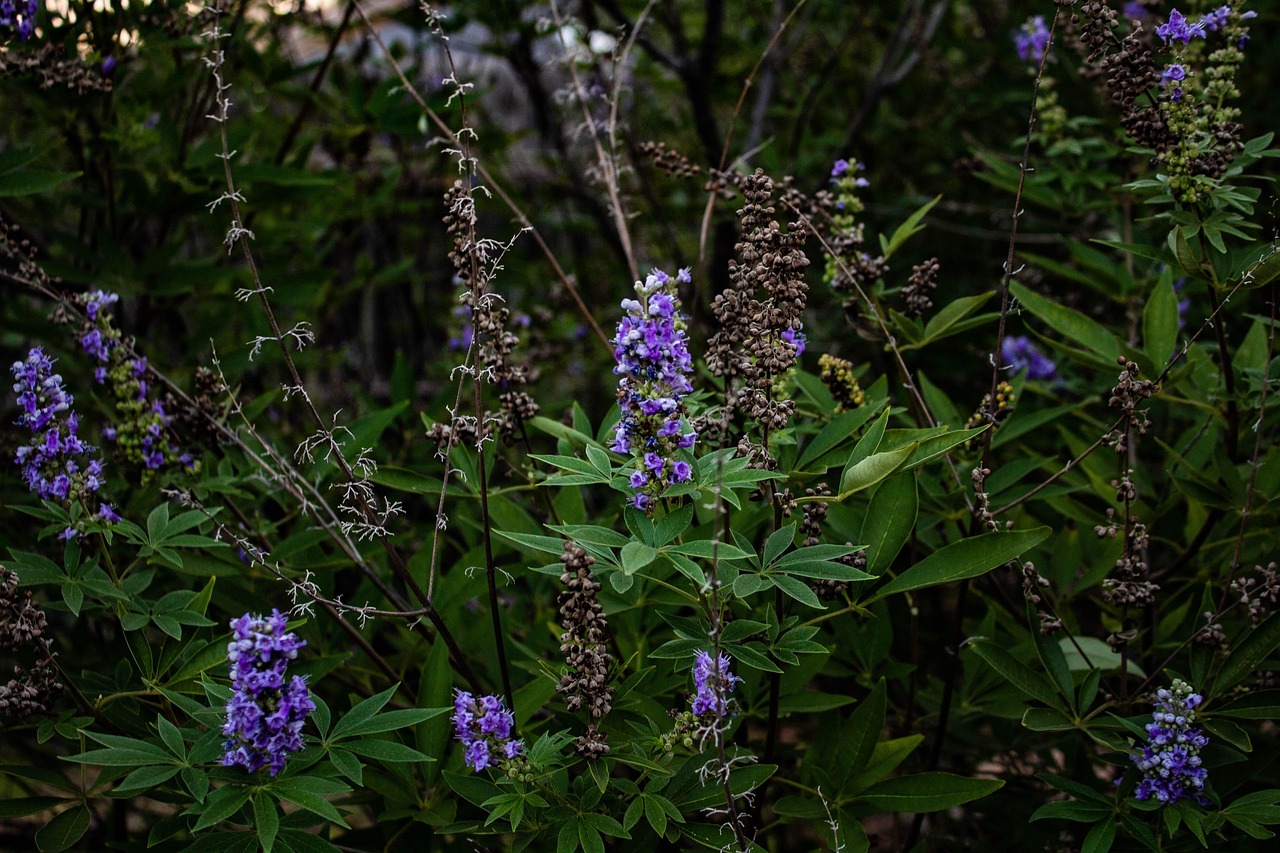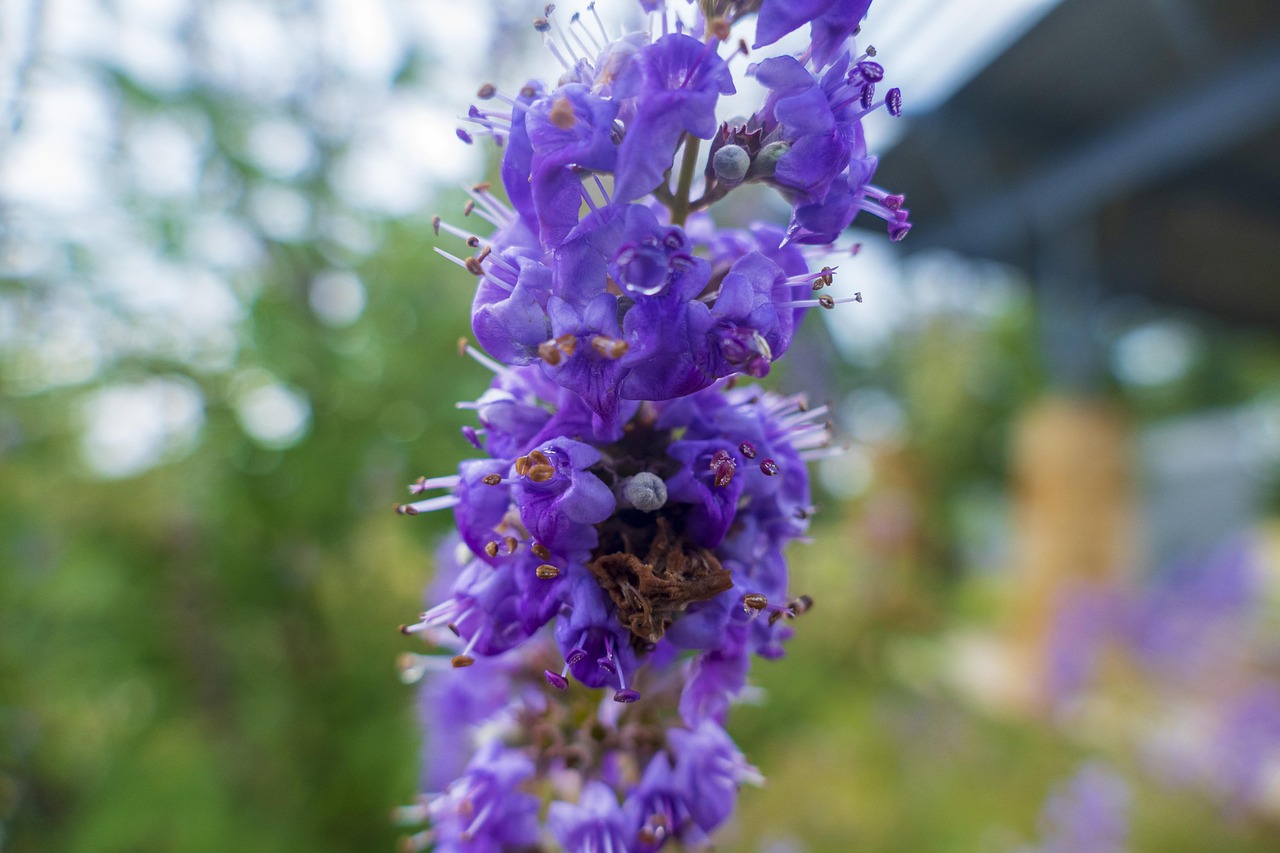The Texas Vitex tree, also known as Vitex agnus-castus, typically exhibits a moderate growth rate, achieving about 3 to 5 feet per year under optimal conditions. This makes it an ideal choice for xeriscapes, where drought-resistant plants are essential.
The Texas Vitex tree is a popular choice for landscaping in arid regions, particularly in Texas. Known for its beautiful purple flowers and aromatic foliage, this deciduous shrub or small tree thrives in dry conditions, making it suitable for xeriscaping. Xeriscaping is a landscaping method designed to reduce or eliminate the need for irrigation. As water conservation becomes increasingly important, selecting the right plants is crucial. The Texas Vitex tree not only enhances the aesthetic appeal of gardens but also withstands the harsh conditions often found in xeriscaped areas.

Understanding the growth rate of the Texas Vitex tree is essential for gardeners and landscapers. This tree can grow to a height of 15 to 30 feet, depending on the growing conditions. Its growth rate is influenced by factors such as soil type, water availability, and sunlight exposure. The tree prefers well-drained soil and full sun, which promotes its rapid growth.
Factors Influencing Growth Rate
Several factors can significantly impact the growth rate of the Texas Vitex tree. Understanding these factors is important for successful planting and maintenance. Below are some key elements that can affect growth:
- Soil Quality: Well-drained soil enriched with organic matter supports healthy growth.
- Water Availability: While the Vitex tree is drought-tolerant, regular watering during its early growth stages can enhance its establishment.
- Sunlight: This tree thrives in full sun and may grow slower in shaded areas.
- Temperature: The Texas Vitex is heat-tolerant but can be affected by extreme cold.
The table below summarizes the growth characteristics and preferences of the Texas Vitex tree:

| Characteristic | Description |
|---|---|
| Common Name | Texas Vitex |
| Scientific Name | Vitex agnus-castus |
| Growth Rate | 3 to 5 feet per year |
| Mature Height | 15 to 30 feet |
| Sunlight Needs | Full sun |
| Soil Preference | Well-drained soil |
| Drought Tolerance | High |
The Texas Vitex tree is not only appreciated for its growth rate but also for its environmental benefits. It attracts pollinators such as bees and butterflies, contributing to the local ecosystem. Additionally, its drought resistance makes it an excellent choice for sustainable landscaping practices.
When considering planting a Texas Vitex tree in a xeriscape, proper spacing is vital. These trees should be planted at least 10 to 15 feet apart to allow for adequate sunlight and airflow, promoting healthy growth. Regular pruning can also help maintain their shape and encourage fuller foliage, which enhances their appearance and health.
In summary, the Texas Vitex tree’s growth rate and adaptability make it an ideal candidate for xeriscaping in regions with limited water resources. By understanding the factors influencing its growth, gardeners can optimize conditions to ensure these beautiful trees thrive in their landscapes.

Planting and Care Tips for Texas Vitex Trees
Successfully establishing a Texas Vitex tree in a xeriscape requires careful planning and proper care. These trees thrive best when their specific needs are met. Below are essential tips for planting and maintaining Texas Vitex trees to ensure optimal growth and health.
Ideal Planting Conditions
When planting Texas Vitex trees, it is crucial to choose the right location and time. Here are some considerations:
- Timing: The best time to plant is in the spring or fall when temperatures are milder. This allows the roots to establish before the heat of summer.
- Location: Select a site with full sun exposure. Texas Vitex trees prefer at least six hours of direct sunlight daily.
- Soil Preparation: Before planting, amend the soil with organic matter to improve drainage and fertility. A well-draining sandy or loamy soil is ideal.
- Spacing: As mentioned earlier, ensure spacing of 10 to 15 feet between trees. This allows for proper airflow and access to sunlight.
Planting Steps
Follow these steps for proper planting of Texas Vitex trees:
- Digging the Hole: Dig a hole twice as wide as the root ball and just as deep. This allows the roots to spread easily.
- Placing the Tree: Remove the tree from its container and gently loosen any tightly bound roots. Position the tree in the center of the hole, ensuring that the top of the root ball is level with the soil surface.
- Backfilling: Fill the hole with native soil, gently tamping it down to remove air pockets. Water thoroughly after backfilling.
- Mulching: Apply a layer of mulch around the base of the tree, keeping it a few inches away from the trunk. Mulch helps retain moisture and suppress weeds.
Watering Requirements
The Texas Vitex tree is known for its drought tolerance, but young trees require consistent watering to establish strong roots. Here are watering guidelines:

- Initial Watering: Water newly planted trees deeply at least once a week for the first few months. This helps promote strong root growth.
- Established Trees: Once established, Texas Vitex trees can tolerate dry conditions. Water during prolonged dry spells or extreme heat.
- Avoid Overwatering: Ensure that the soil drains well. Overwatering can lead to root rot and other issues.
Fertilization Needs
Texas Vitex trees generally do not require heavy fertilization. However, providing some nutrients can enhance growth and flowering. Consider these tips for fertilization:
- Soil Test: Conduct a soil test to determine nutrient needs before applying fertilizer.
- Balanced Fertilizer: Use a balanced, slow-release fertilizer in early spring if needed. Follow package instructions for application rates.
- Avoid Excess Nitrogen: Too much nitrogen can promote leaf growth at the expense of flowers.
Pest and Disease Management
The Texas Vitex tree is relatively pest-resistant, but it can occasionally face some issues. Being proactive in monitoring can help prevent potential problems:
- Common Pests: Aphids, spider mites, and scale insects may infest Vitex trees. Regular inspection can identify these pests early.
- Disease Resistance: The tree generally has good resistance to diseases. However, overwatering can lead to fungal infections.
- Pest Control: If pests are detected, use insecticidal soap or neem oil as an organic option for treatment.
By following these planting and care guidelines, gardeners can ensure that their Texas Vitex trees thrive in xeriscaped environments, contributing beauty and ecological benefits to their landscapes.
Landscaping Ideas with Texas Vitex Trees
The Texas Vitex tree is not only a beautiful addition to any xeriscape but also serves multiple functions in landscaping. Its vibrant flowers attract pollinators, while its dense foliage provides shade and privacy. Here are some creative landscaping ideas that incorporate Texas Vitex trees.
Creating a Xeriscape Garden
Incorporating Texas Vitex trees into a xeriscape garden can enhance both the aesthetic appeal and environmental sustainability of the landscape. Here are some tips for designing a successful xeriscape garden:
- Layering Plants: Use the Texas Vitex as a backdrop in your garden design. Plant smaller, drought-tolerant flowers and shrubs in front to create layers and depth.
- Color Coordination: The purple flowers of the Texas Vitex beautifully contrast with yellows, reds, and whites of other flowering plants. Consider pairing them with other native Texas plants like Blackfoot daisies and Mexican feather grass.
- Textural Variety: Combine the smooth leaves of the Vitex with spiky or feathery plants to create visual interest.
Privacy Screens and Windbreaks
Texas Vitex trees can also serve practical purposes in landscaping. Their height and density make them ideal for creating privacy screens or windbreaks:
- Planting for Privacy: Plant Texas Vitex trees in a staggered row to form a natural privacy fence. This arrangement allows for dense foliage while maintaining airflow.
- Windbreaks: Use clusters of Vitex trees to shield outdoor living spaces from harsh winds. This can improve comfort while enjoying patios or decks.
Attracting Wildlife
Another benefit of planting Texas Vitex trees is their ability to attract various wildlife. This characteristic enhances the ecological value of your landscape. Here’s how you can encourage wildlife:
- Pollinator Gardens: The Texas Vitex is known to attract bees, butterflies, and other pollinators. Planting them alongside other native flowering plants can create a vibrant pollinator garden.
- Nesting Sites: The dense foliage of the Vitex provides shelter for birds and other small creatures, making it an excellent choice for wildlife-friendly landscaping.
- Natural Pest Control: Attracting beneficial insects such as ladybugs and lacewings can help control pest populations naturally, reducing the need for chemical treatments.
Maintenance Considerations for Landscapes
While Texas Vitex trees are relatively low-maintenance, there are still some considerations to keep your landscaped areas looking their best:
Pruning Techniques
Regular pruning helps maintain the shape and health of Texas Vitex trees. Here are some pruning tips:
- Timing: Prune in late winter or early spring before new growth begins. This encourages a bushier appearance and promotes flowering.
- Cutting Techniques: Use clean, sharp tools to make clean cuts. Remove dead or crossing branches to improve airflow within the canopy.
- Avoid Over-Pruning: Limit pruning to no more than one-third of the tree’s total size at one time to avoid stress.
Irrigation Management
Even though Texas Vitex trees are drought-tolerant, proper irrigation management during establishment is critical. Here’s how to manage watering effectively:
- Drip Irrigation: Consider installing a drip irrigation system for efficient watering during dry spells. This method directs water right to the roots.
- Watering Schedule: Monitor the soil moisture regularly. Water only when the top inch of soil feels dry to prevent overwatering.
Additional Plant Companions
Selecting complementary plants can enhance the overall look and functionality of your xeriscape featuring Texas Vitex trees. Here are some suitable companion plants:
| Companion Plant | Description |
|---|---|
| Mexican Feather Grass | This ornamental grass adds texture and movement, pairing well with the upright growth of Vitex. |
| Blackfoot Daisy | A low-growing perennial that produces cheerful white flowers, enhancing visual appeal. |
| Lantana | This drought-tolerant plant attracts butterflies and provides vibrant colors throughout the growing season. |
| Purple Sage | A hardy shrub that complements the purple hues of the Vitex flowers, offering aromatic benefits too. |
By incorporating these landscaping ideas, gardeners can maximize the benefits of Texas Vitex trees while creating beautiful, functional outdoor spaces that thrive in arid conditions.
Environmental Benefits of Texas Vitex Trees
In addition to their aesthetic and practical uses in xeriscaping, Texas Vitex trees offer several environmental benefits. These features make them a valuable addition to any landscape, especially in areas with limited water resources.
Water Conservation
Texas Vitex trees are known for their drought resistance. By incorporating these trees into xeriscapes, homeowners can significantly reduce their overall water usage. Their ability to thrive with minimal irrigation helps to promote sustainable landscaping practices.
Soil Improvement
The roots of the Texas Vitex tree help to stabilize the soil and prevent erosion. This is particularly beneficial in areas prone to soil degradation. Additionally, they contribute organic matter back into the soil as leaves drop and decompose, enriching the nutrient content over time.
Supporting Biodiversity
Texas Vitex trees play an essential role in supporting local ecosystems. They provide habitat and food sources for various wildlife species, including:
- Pollinators: The vibrant flowers attract bees, butterflies, and other pollinating insects, which are crucial for the reproduction of many plants.
- Bird Species: The dense foliage offers nesting sites and protection for birds, enhancing biodiversity in urban and suburban areas.
- Beneficial Insects: By attracting beneficial insects, Texas Vitex trees can help manage pest populations naturally, reducing the need for chemical pesticides.
Potential Challenges and Considerations
While the Texas Vitex tree has many advantages, it is essential to be aware of potential challenges in its cultivation. Understanding these factors can help gardeners make informed decisions.
- Invasive Potential: In some regions, Texas Vitex can become invasive if not properly managed. Regular monitoring and maintenance are necessary to control its spread.
- Cold Sensitivity: Although it is heat-tolerant, Texas Vitex may struggle in unusually cold temperatures. Planting in protected areas can mitigate this risk.
- Pollen Allergies: Some individuals may be sensitive to pollen from flowering Vitex trees. Awareness of this potential issue is important for those with allergies.
Final Thoughts
The Texas Vitex tree is a remarkable addition to xeriscaped environments, combining beauty, functionality, and environmental benefits. Its moderate growth rate, attractive flowers, and low maintenance needs make it a popular choice for both residential and commercial landscapes. By providing essential habitat for wildlife and promoting sustainable landscaping practices, the Texas Vitex tree holds significant value beyond its visual appeal.
Gardeners can maximize the benefits of this adaptable species by carefully considering planting locations, companion plants, and ongoing care needs. With proper management, the Texas Vitex tree can thrive in xeriscapes, enhancing the beauty of outdoor spaces while contributing positively to the environment.
In conclusion, embracing the Texas Vitex tree in xeriscaping not only enriches the landscape but also supports ecological health. As water conservation becomes increasingly vital in many regions, this tree stands out as an excellent choice for sustainable gardening practices.
